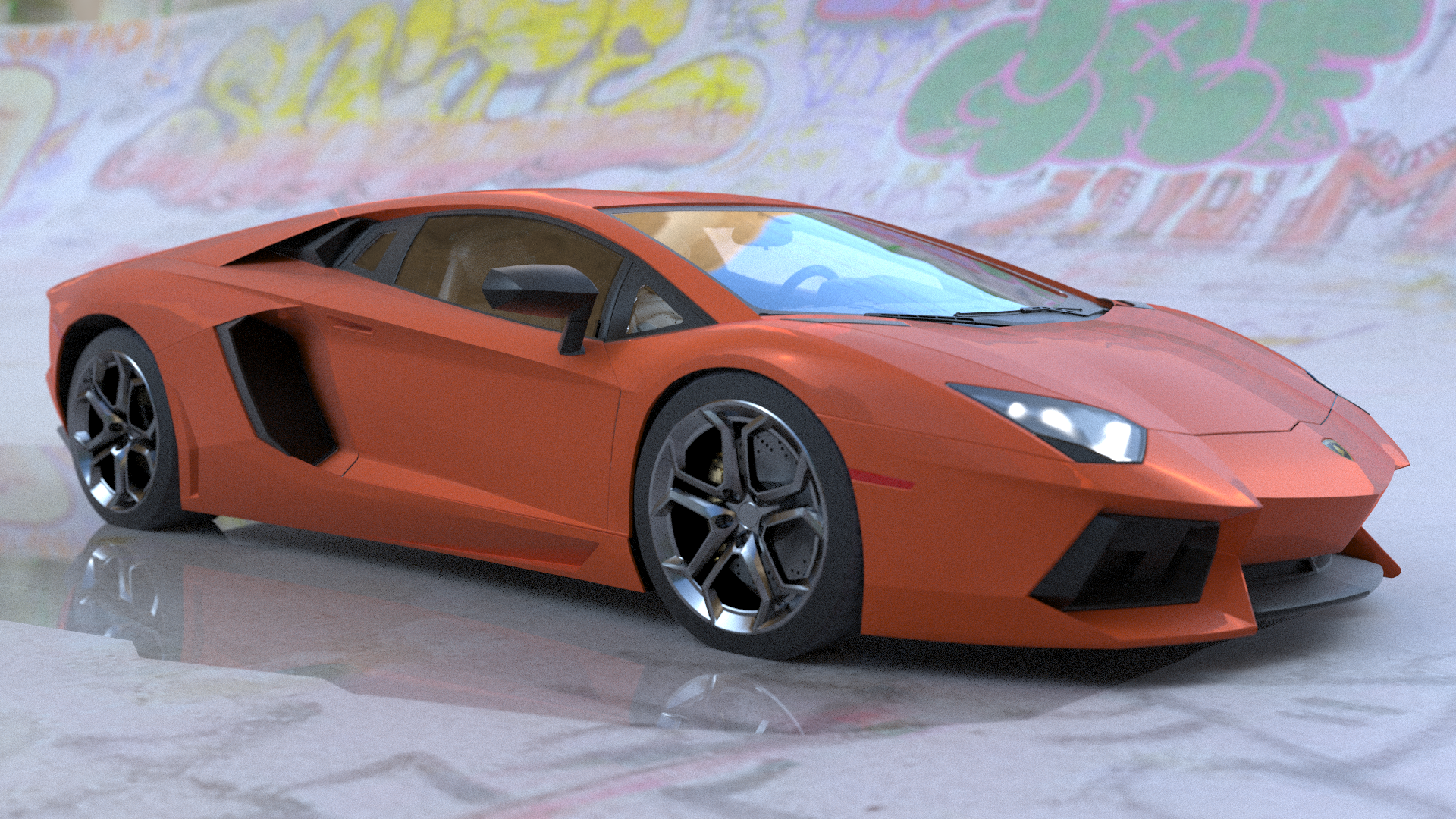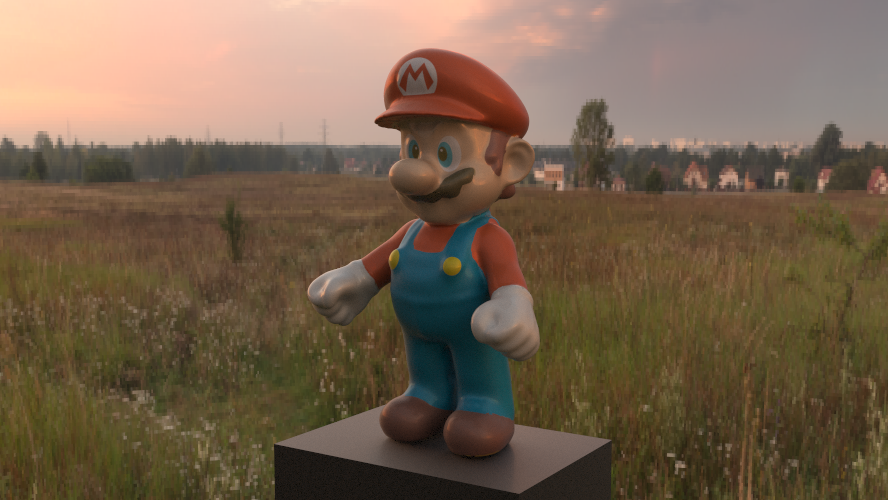pbr: a Physically-Based 3D Renderer in Go
Package pbr implements Physically-Based Rendering with a Monte Carlo path tracer. [ Documentation ] [ Github ]
$ make lambo
This is an unbiased forward path-tracer written in Go and inspired by Disney's Hyperion video. It traces light rays from physically-based cameras to surfaces with realistic materials and simulates how the rays should bounce around the scene. It has a simple API for creating scenes in code and a CLI for rendering photorealistic images from the command line.
Try it
Install:
$ go get github.com/hunterloftis/pbr
$ cd $GOPATH/src/github.com/hunterloftis/pbr
$ dep ensure
Run:
$ cd $GOPATH/src/github.com/hunterloftis/pbr
$ go build ./cmd/pbr
$ pbr fixtures/models/falcon.obj -lat 0.5 -lon 0.5 -complete 5
$ open falcon.png
Features
Shapes & Transforms
$ make shapes
The renderer supports spheres, cubes, and triangles that can be moved, scaled, and rotated.
Image-based lighting
$ make ibl
The renderer can use high dynamic range (HDR) panoramic images as complex, omnidirectional light sources. This allows highly detailed real-world lighting to illuminate the scene's surfaces for greater realism and visual interest.
All the above images were rendered with an identical model and identical materials; the only difference between them is the image used for lighting.
Sampling & Branching
$ make adaptive
Adaptive sampling devotes more time to sampling noisy areas than already-resolved ones. Branched tracing splits primary rays into multiple branches to better sample the most important (first) bounce of each path. Both of these techniques allow the renderer to spend its Ray-Scene intersection budget more effectively.
Both closeups of the Millennium Falcon were rendered in 10 minutes. The top image used naive sampling while the bottom used the default adaptive and branching settings.
Wavefront .obj files
Physically-based materials
Arbitrary light sources
Direct lighting
Thin surfaces
Physically-based cameras
Supersampled anti-aliasing
K-D Tree acceleration
Summary
- Geometry:
- Parametric shapes (spheres, cubes, triangles)
- Transformation matrices (translate, rotate, scale)
- Wavefront .obj files (meshes) and .mtl files (materials)
- Materials:
- Physically-based materials
- PBR extensions for .mtl files
- Reflection, transmission, absorption, diffusion
- Color, refractive index, roughness, transparency, fresnel channels, metalness, clear coat
- Texture maps (.jpg, .png)
- Lighting:
- Direct lighting
- Arbitrary light sources ('everything is a light')
- Image-based lighting
- Cameras:
- Physically-based cameras
- Sensor, aperture, focal length, focus, depth-of-field
- Quality and speed:
- Interface:
- 100% Go with no system dependencies
- Sequential API, concurrent execution
- CLI
More examples
I've gitignored the /fixtures directory to keep large binaries out of the repository. You can download the Makefile fixtures from Google Drive for a library of models, materials, and HDR environments to play with.
API
See GoDoc
CLI
Usage: pbr SCENE [options]
Positional arguments:
SCENE input scene .obj
Options:
--verbose verbose output with scene information
--info, -i output scene information and exit
--out OUT, -o OUT output render .png
--heat HEAT output heatmap as .png
--noise NOISE output noisemap as .png
--profile record performance into profile.pprof
--width WIDTH rendering width in pixels [default: 800]
--height HEIGHT rendering height in pixels [default: 450]
--target TARGET camera target point
--focus FOCUS camera focus point (if other than 'target')
--dist DIST camera distance from target
--lat LAT camera polar angle on target
--lon LON camera longitudinal angle on target
--lens LENS camera focal length in mm [default: 50]
--fstop FSTOP camera f-stop [default: 4]
--expose EXPOSE exposure multiplier [default: 1]
--ambient AMBIENT the ambient light color [default: &{500 500 500}]
--env ENV, -e ENV environment as a panoramic hdr radiosity map (.hdr file)
--rad RAD exposure of the hdr (radiosity) environment map [default: 100]
--floor create a floor underneath the scene
--adapt ADAPT adaptive sampling multiplier [default: 8]
--bounce BOUNCE, -d BOUNCE
number of light bounces (depth) [default: 8]
--direct DIRECT, -d DIRECT
maximum number of direct rays to cast [default: 1]
--branch BRANCH, -b BRANCH
maximum number of branches on first hit [default: 32]
--complete COMPLETE, -c COMPLETE
number of samples-per-pixel at which to exit [default: +Inf]
--thin treat transparent surfaces as having zero thickness
--help, -h display this help and exit
--version display version and exit





